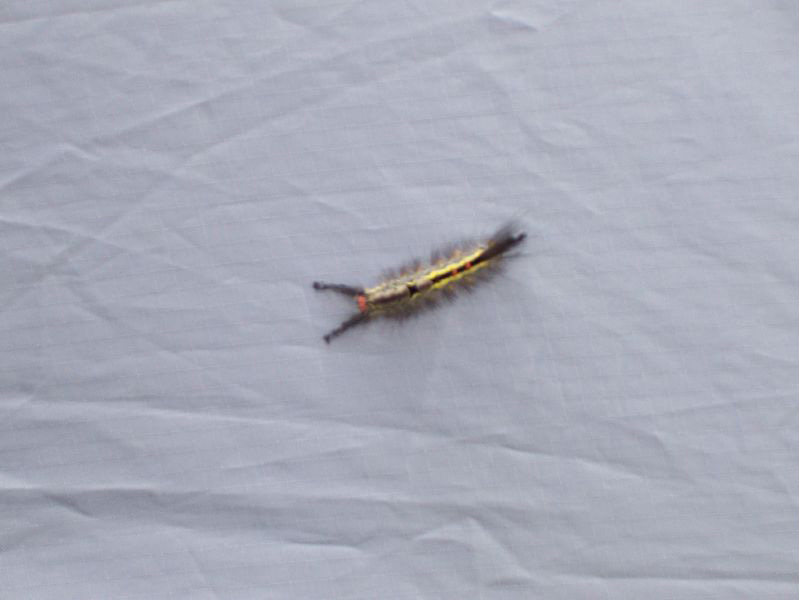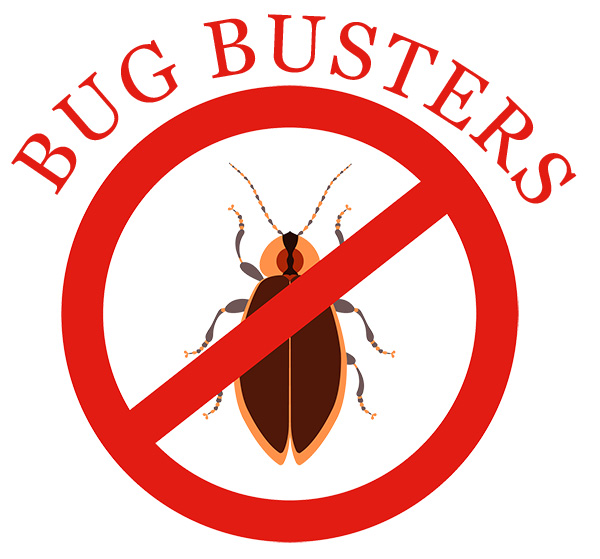Tussock caterpillars are voracious eaters that can defoliate an entire forest. The most well-known member of this family is the beautiful but destructive Gypsy Moth, which isn’t native to North America. The destructive potential of this type of tussock moth caterpillar is clear, because it can cost millions of dollars a year to control these infestations. Tussock caterpillars are known for their tufts of hair, which can be very striking. Many of them have four characteristic clumps of bristles on their backs, which makes them look like toothbrushes. Some of them have a pair of longer tufts near their heads and rear.
If you judge them based on their looks, these furry caterpillars may look harmless. But if you touch one with a bare finger, you’ll feel like you have been pricked by fiberglass. Some species (such as the Brown-tail) will even leave you with a persistent and painful rash. When they’re fully mature, tussock moths are often dull brown or white. Most of the females aren’t able to fly, and neither males or females will feed when they’re adults. Their main focus is on mating and laying eggs. Once they do, they will die in a matter of days.

Behavior of Tussock Caterpillars
Tussock caterpillars are known for being a forest problem, but they have been moving into residential areas. Adult moths are dull in color, but their hairy caterpillar phase can take the leaves off of small trees and shrubs if they’re left unchecked. Tussock caterpillars can appear in large numbers during the spring and summer months, and they can grow up to an inch and a half long. They can also build cocoons on homes, picnic tables, and other outdoor items. Once they’re there, they can be hard to remove.
Identifying an Infestation of Tussock Caterpillars
Before you start a treatment program for tussock caterpillars, you need to make sure it’s the real source of the problem. They’re more recognizable when they’re in their caterpillar phase, and there are many different types. They get their name because of their fluffy tufts (called “tussocks”) of hair, which come in a variety of brilliant colors (such as yellow, orange, and black). When they crawl, tussock caterpillars can stand vertically. This helps them to move from leaf to leaf when they feed. A tussock moth caterpillar will relentlessly feed for four to six weeks before it makes a cocoon and becomes an adult in the summer. Tussock moths look similar to other moth species. They have dull, dark gray and brown patterned wings, hairy legs, and tiny antennae.
Once you have confirmed you have tussock caterpillars, you need to find out where they’re the most active as well as the size and severity of the infestation. This will help you determine the best treatment approach. They can typically be found in garden areas, shrubs, and trees. Most tussock caterpillars are found in forest areas, but there has been a growing number that have migrated to residential areas. This is primarily due to the plants that have been growing in landscaped areas, which they find attractive.
Controlling an Infestation of Tussock Caterpillars
The best way to control an infestation of tussock caterpillars is with chemicals. But before you move forward with treatment, make sure you read all the product labels and to follow the application instructions. You also want to make sure you wear the proper personal protective equipment (PPE), so you can keep yourself safe. If your infestation is more severe and you need to find a place that does pest control in Corpus Christi, be sure to get in touch with Bug Busters Pest Control.

